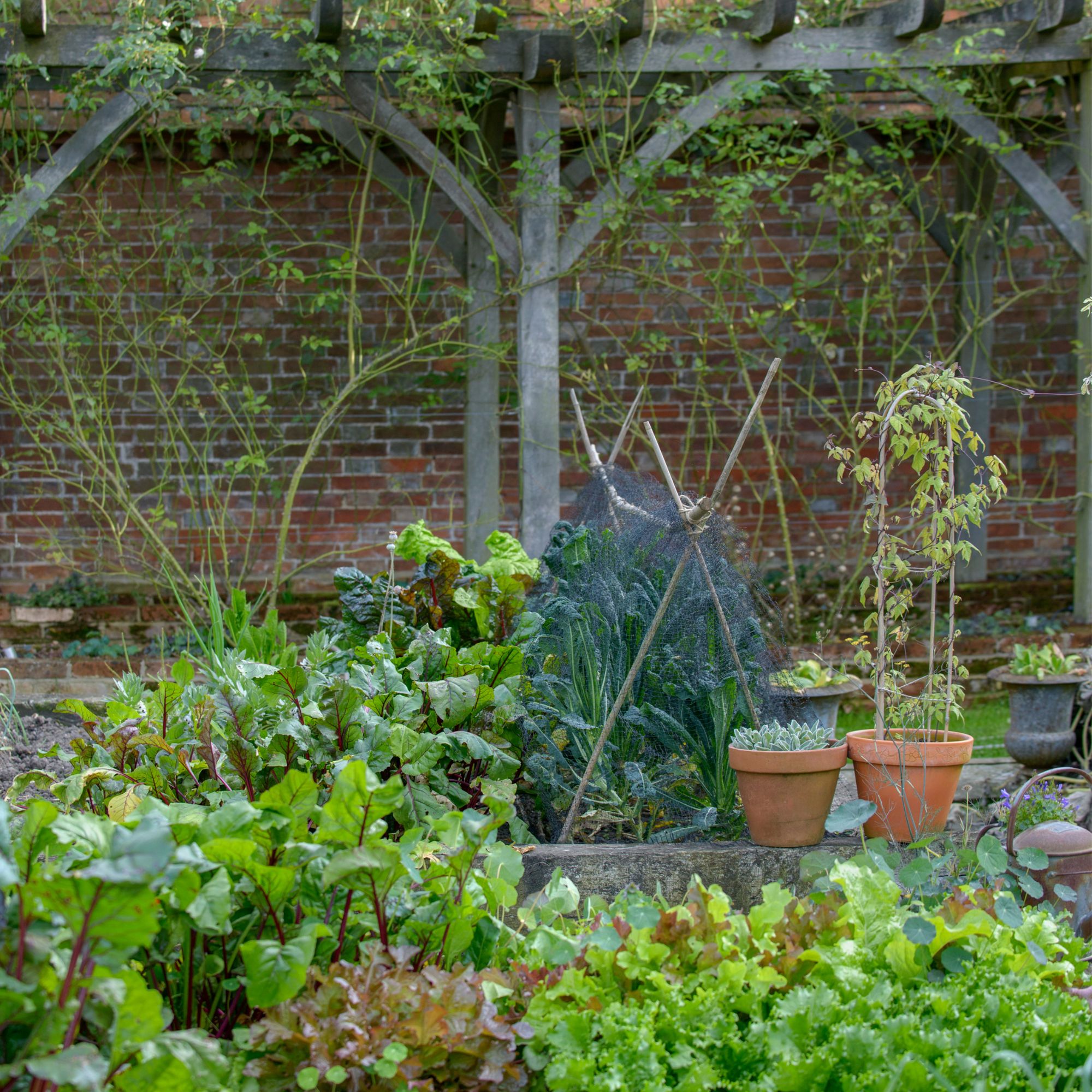
Growing vegetables vertically, rather than along the ground, is an ingenious way to unlock more space and boost harvests in a small garden.
After nearly 10 years on my allotment, I’ve discovered that vertical gardening makes picking harvests super easy, both in time and – mercifully – effort. It also promotes healthier plants by improving airflow and increasing sunlight exposure, while handily raising crops out of a slug’s eyeline. Plus, vertical structures add style and interest to your garden or plot. What’s not to love?
A little planning goes a long way, so I’ve made it easy for you. Before we start, swot up on how to grow vegetables in a small garden, and you might want to learn how to build raised garden beds, too.
Now, let’s get started on this genius small garden idea. Read on to discover seven vegetables you can grow vertically this year, including a few exciting, easy-grow varieties you might not have heard of.
1. Runner Beans
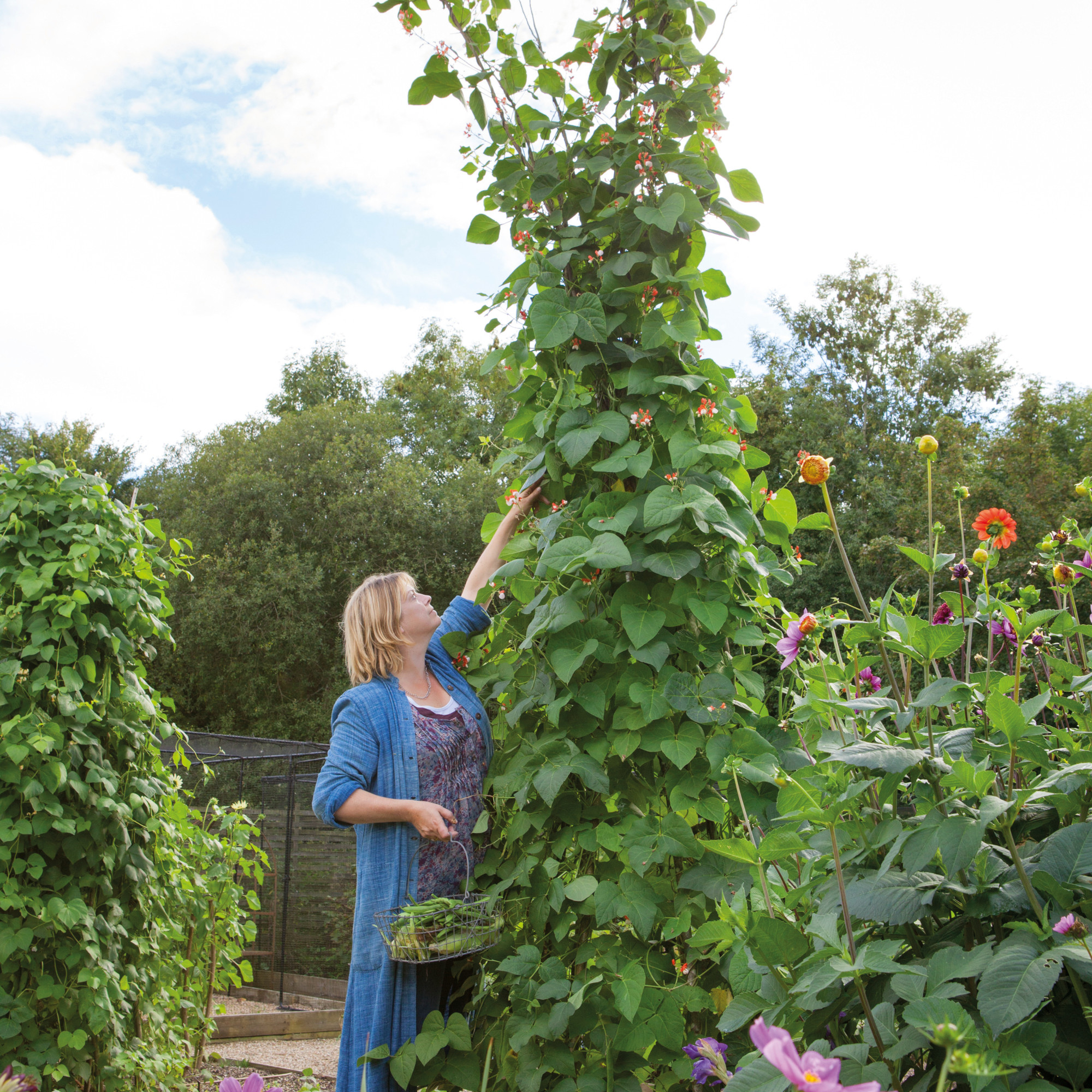
A classic choice for vertical gardening, runner beans are particularly popular for their ability to thrive in tight spaces. They’re also quick to grow and are great to sow with children, as the seeds are nice and big for little hands.
I have two key pieces of advice on runner beans: firstly, only grow them if you eat them, as you’ll have beans coming out of your ears for weeks. Secondly, make sure your structure is really solid, as the weight of the harvest is incredible.
Renowned gardening expert Sarah Raven also says, 'Runner beans thrive in full sun with fertile, moisture-retentive soil. Support them with a sturdy wigwam of canes, planting one bean per pole.'
'Water well, especially in dry spells, and protect young plants from slugs by starting them indoors. Be patient and wait until April at the earliest to plant your seeds as they cannot be planted outside until the frosts are over. You do not want to let them stay too long in their pots, as they will start to tangle with their neighbours.'
Where to buy runner bean seeds:
- Sarah Raven: Get started with Runner bean 'White Emergo', an extremely vigorous grower, tried and tested by Sarah.
- Suttons: Stock up on Runner bean 'firestorm' seeds.
2. Cucumbers
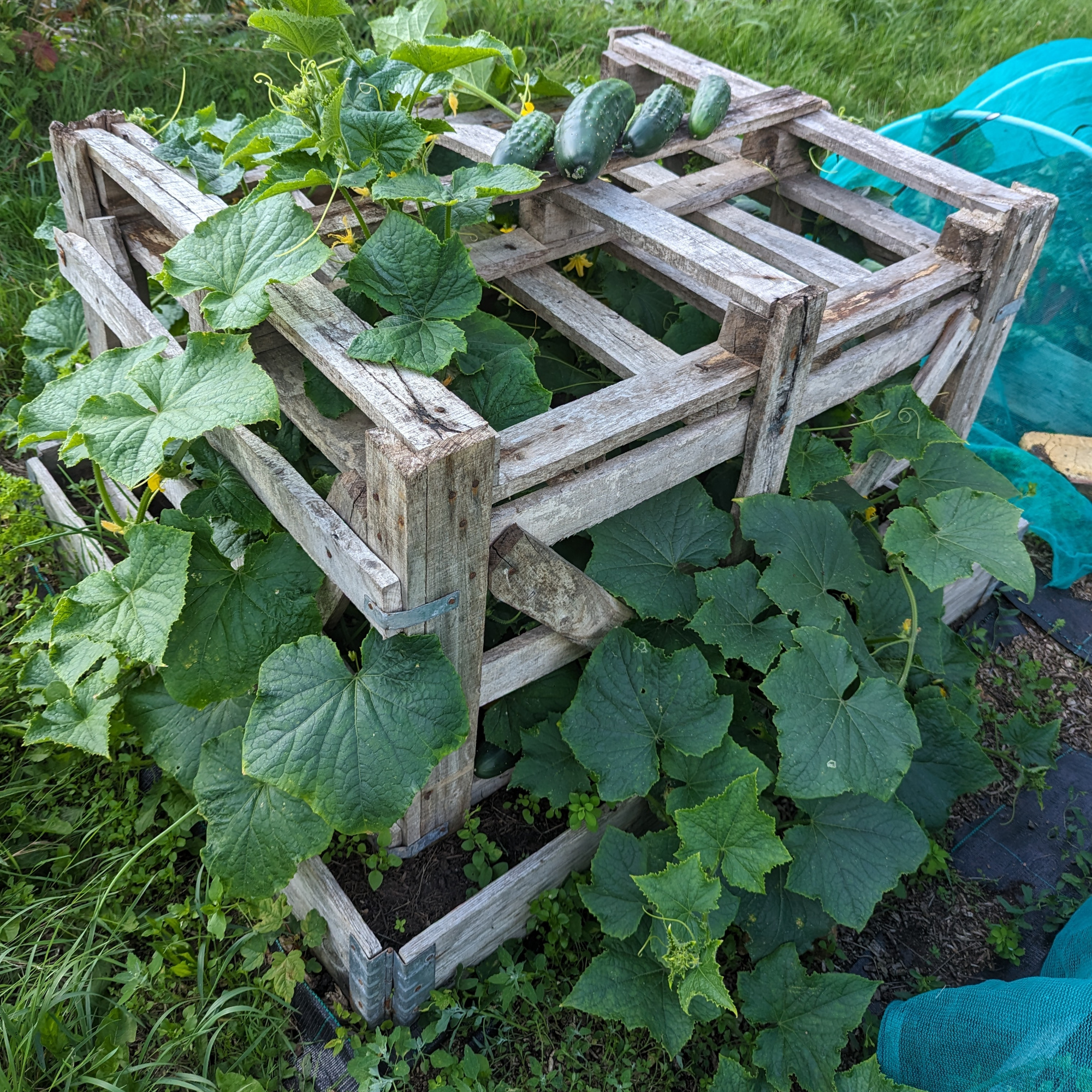
Cucumbers are easy climbers for vertical growing – and they are unstoppable once they get going. These two facts make them an excellent opportunity to try an interesting variety. Lucy Hutchings at She Grows Veg recommends her beautiful Dragon’s Egg cucumber.
'Train them up a trellis for better airflow and easier harvesting. Keep soil consistently moist and feed regularly for the best yields of these unique, creamy-white fruits,' she advises.
I’ve also grown cucumbers around a large wooden cage that paving slabs were delivered in – and it worked a treat. The key is to feed them regularly and start them off by enriching the soil with compost or well-rotted manure.
Where to buy cucumber seeds:
- Thompson & Morgan: Choose from a huge selection of cucumber seeds.
- Suttons: Sow the ever-popular Cucumber F1 'Bella' seeds this month.
3. Squash and pumpkins
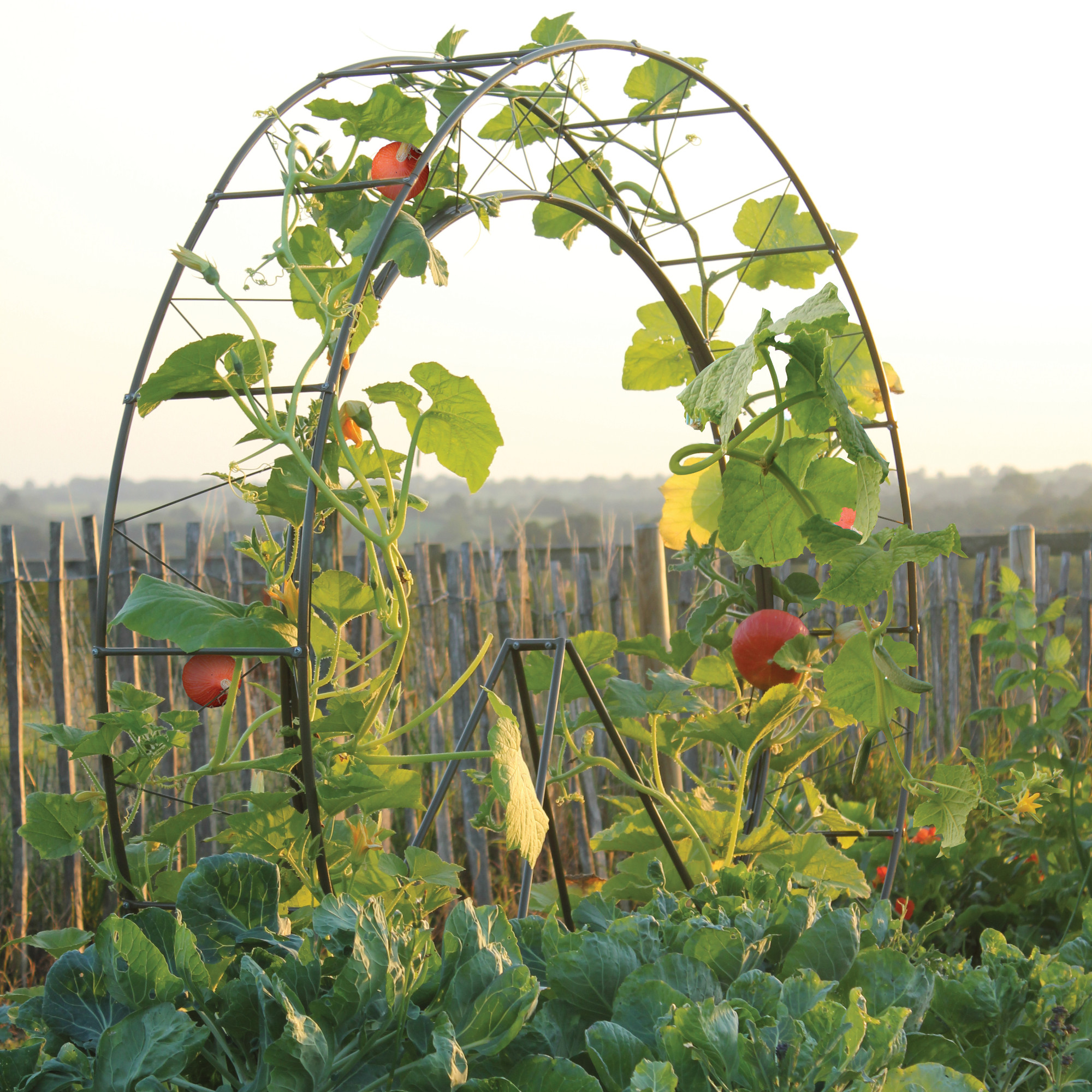
While the squash family is often associated with sprawling vines that consume a whole field (hello, pumpkin patches), growing pumpkins vertically can completely transform your garden layout.
The secret is to build a structure that is strong enough to hold the plant and its fruit – or invest in a show-stopping, statement-making London Eye Plant Frame from Agriframes.
They advise: 'Growing squash vertically on an arch or support helps the fruit ripen with plenty of light and air around the plant, as well as looking spectacular. They become a real talking point in the kitchen garden.'
Where to buy squash and pumpkin seeds:
- Suttons: We love this Squash 'Jaune et Vert'.
- Thompson & Morgan: Get started with the Winter celebration mix.
4. Malabar Spinach
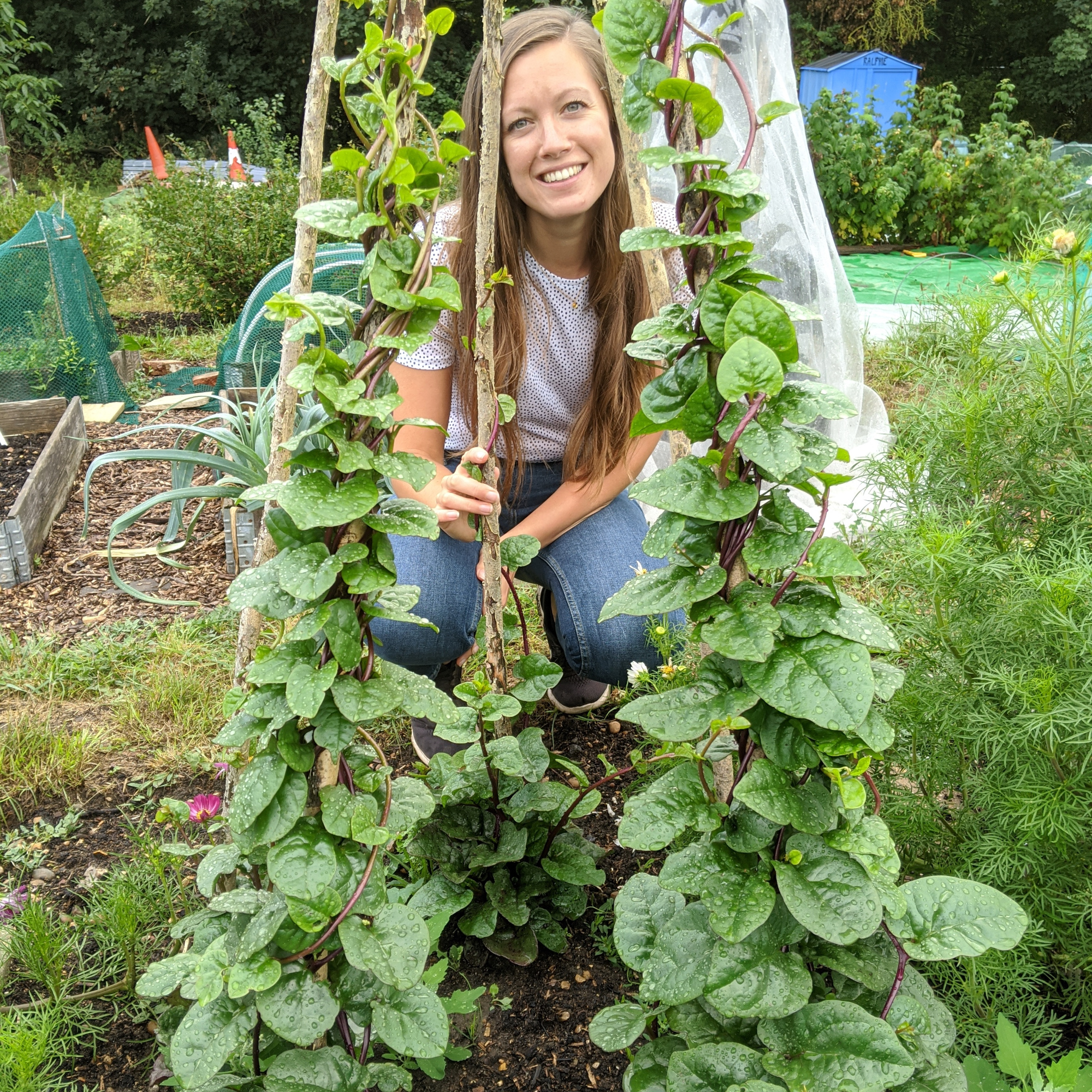
Malabar what, I hear you ask? This tropical vine from Asia is a fantastic addition to any vertical garden – and something you certainly won’t find in the shops easily. Unlike traditional spinach, Malabar’s rampant climbing habit means it can transform an ordinary fence or wall into a lush, edible backdrop.
When I first started growing Malabar spinach vertically, I found that a simple wigwam was all I needed. Place it in a sunny spot and water consistently. I’ve used Malabar spinach in everything from salads to stir-fries – it’s tougher than regular spinach and has a unique peppery, lemony flavour.
Where to buy Malabar spinach seeds:
- Dobies: 40 Malabar 'Spinach Red' Seeds for just £0.89.
- Amazon: Green Malabar seeds are another brilliant choice.
Shop vegetable support frames
We really like this plant support with a rustic finish. It's perfect for growing everything from runner beans to cucumbers and even sweet peas. The jute netting is supplied as an added bonus.
Perfect for use on walls or fences, the Gripple plant system can support all sorts of crops and plants.
You can use this tomato support frame inside the greenhouse or outside in the garden and designed to house a growbag.
5. Peas
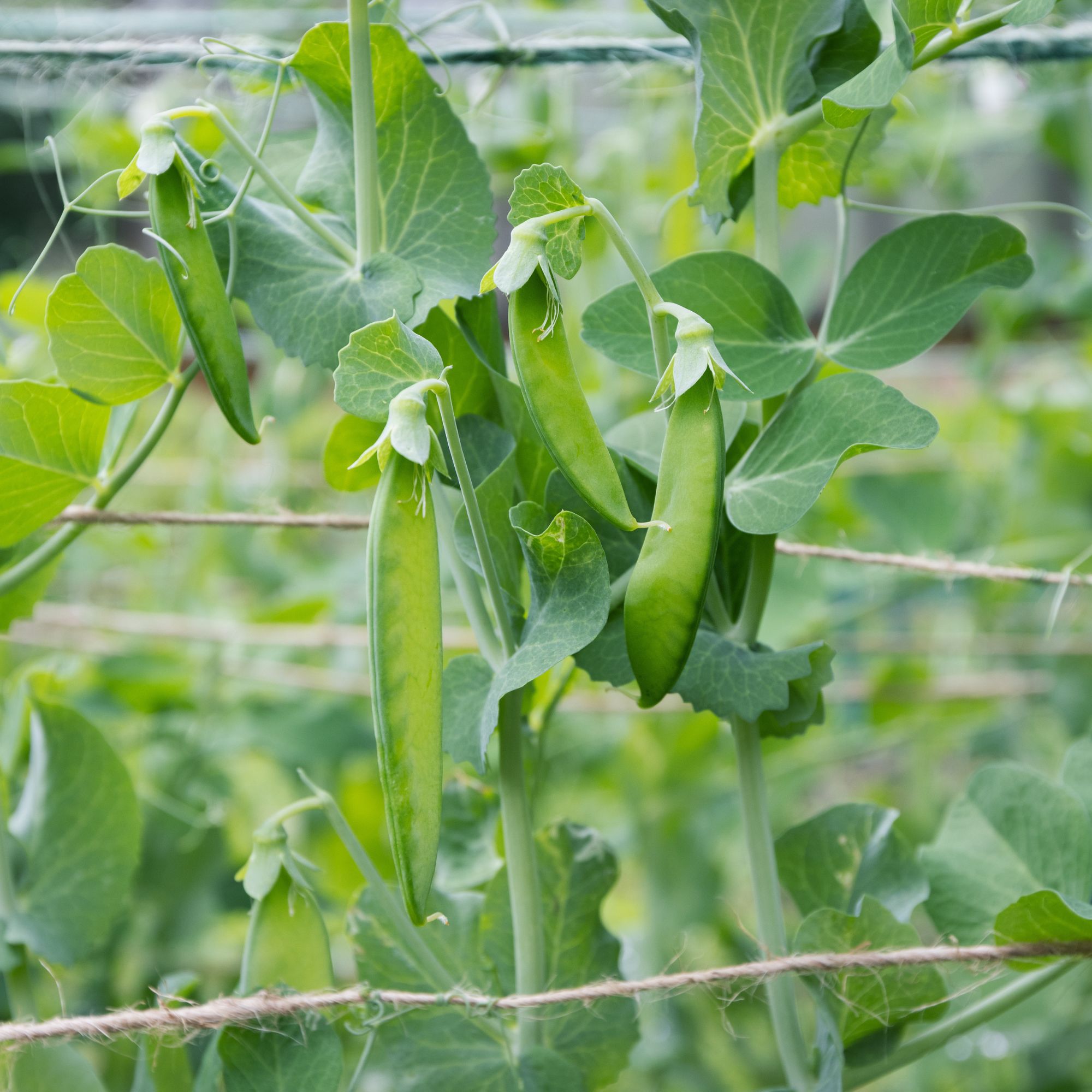
Peas are another vegetable that naturally lends itself to vertical growing. They’re perfect for small gardens, as their delicate tendrils scramble eagerly up nets and trellises. Just remember: water, water, water!
And keep an eye on them as they grow. Every few days, I gently guide them to ensure they don’t droop or tangle, which helps maintain both the structure and productivity of the plant.
I grow pea seedlings in lengths of gutter. Sounds mad, but it works. Fill the gutter with soil, sow your seeds according to the packet instructions, then when they’re ready to plant out, push the whole row out in one go and slide into place.
Where to buy pea seeds:
- Dobies: Grow Pea 'Hurst Greenshaft' for the sweetest peas.
- Thompson & Morgan: Pea 'Boogie' is another popular choice.
6. Tomatoes
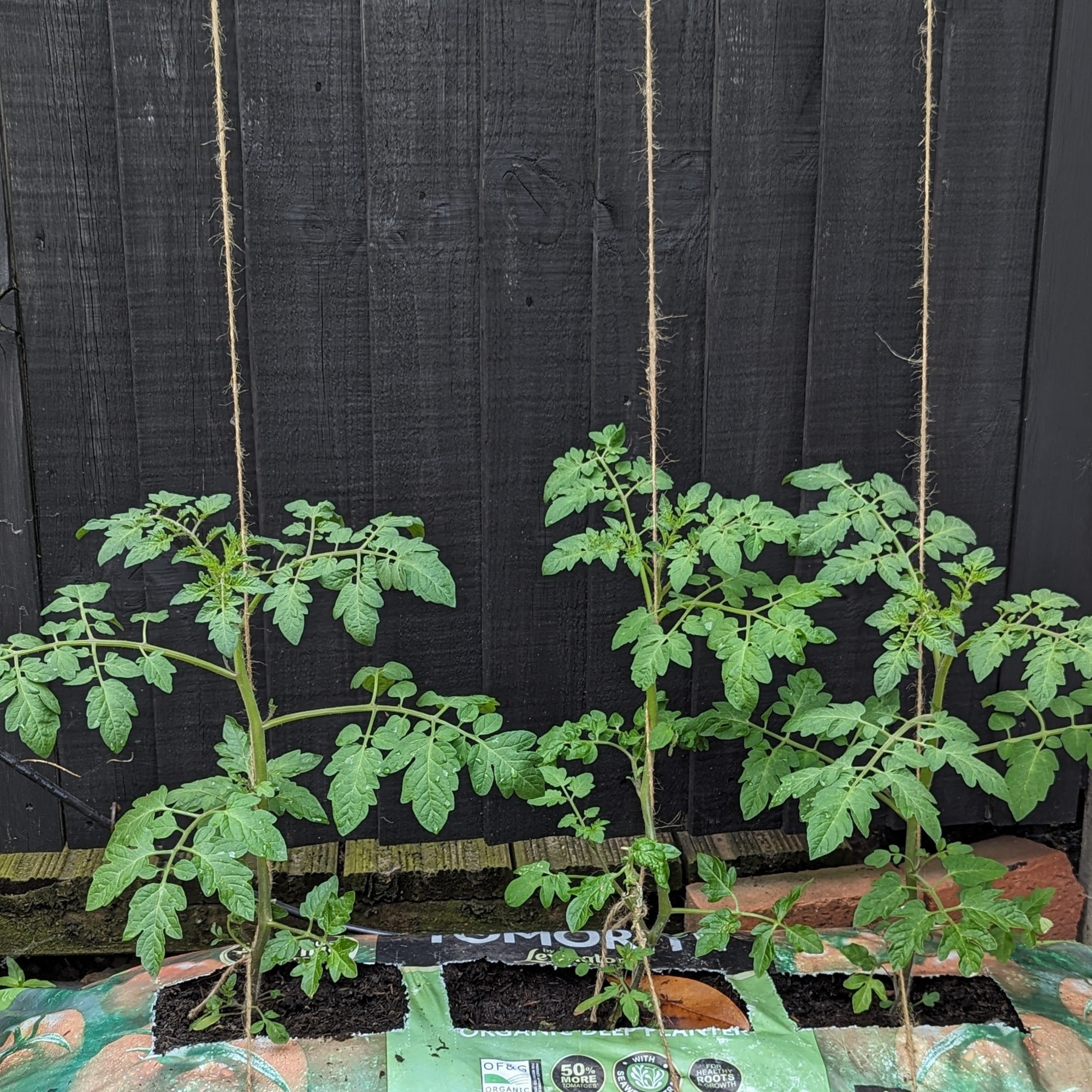
Tomatoes are a must-grow – you can’t imagine the difference between shop-bought and home-grown! For vertical growing, choose the indeterminate varieties – you won’t get far with the determinate ones, as they create compact, bushy plants.
There are a few ways you can plant determinate varieties; in pots, in compost bags cut in half and stood on end, in grow bags with slits cut through for planting; or directly into the ground. Tomatoes grow very tall, so bear that in mind when planning where to plant them.
The main thing to think about is how you’ll support them. I’ve found that string is your best friend in supporting their weight, but you can learn about the staking technique in our article on how to grow tomatoes vertically.
When planting, I bury one end of the string under the roots or secure the string underneath the pot or grow bag. Then I tie the other end onto a sturdy hook or support, at least five feet above the base of the plant. As the tomato grows, wind the stem around the string.
- Suttons: Go for a selection of Suttons' customers' favourites in the Nurseryman's choice tomatoes.
- Thompson & Morgan: Tumbler Tom Red is another foolproof choice.
7. Courgettes
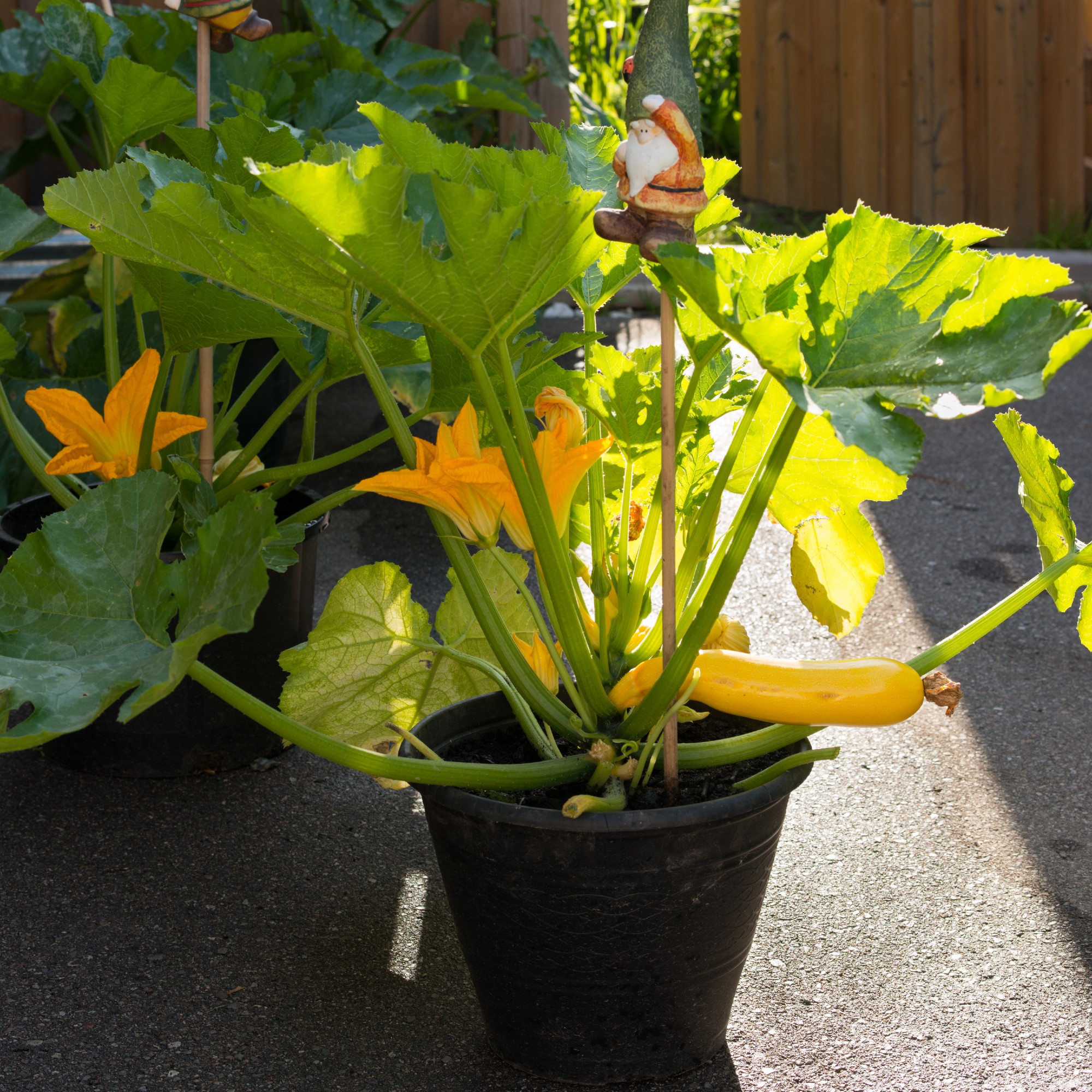
Vegetable gardeners know both the joy and curse of courgettes: the harvest is delicious, but it can get out of hand – fast. But this is not the case when grown vertically! You can see every fruit as it flowers and ripens, and therefore dodge the danger of a hidden 2kg whopper.
Use a strong stake to tie the stem in place as it grows and pick regularly. Courgettes are prolific and sausage-sized fruits are far nicer to eat (and fit in the fridge) than hefty marrows.
- Suttons: These pretty Courgette 'Courcourzelle' seeds are nutty and sweet.
- Dobies: Opt for a courgette collection featuring 3 popular varieties in 9cm pots
FAQs
Are there any disadvantages to vertical growing?
There aren’t downsides, but there are two considerations. First, vertical gardens can be more prone to wind damage, so (I know I’ve said this repeatedly, but…) reinforce your supports.
Secondly, you’re often placing plants close together, which means there will be many roots seeking nutrients, so the soil needs to be fertile. Feed the plants regularly and enrich the ground with compost or a medium of your choice. And that’s it! Happy vertical gardening. You won’t regret it.
There are plenty of other climbing plants you can grow in pots too and these budget trellis ideas will not only support them to grow skyward but will add extra interest to your vertical garden to boot.







